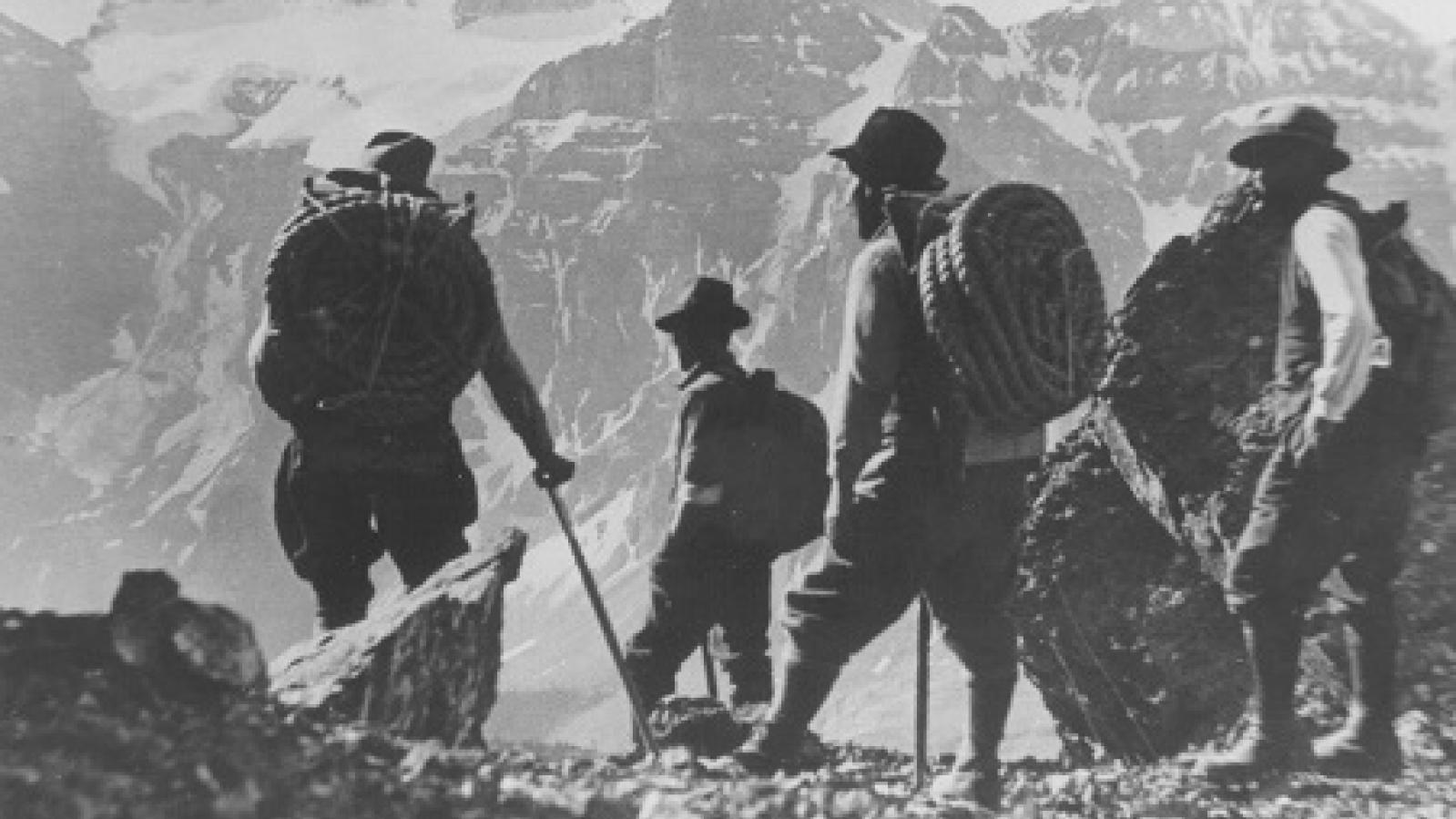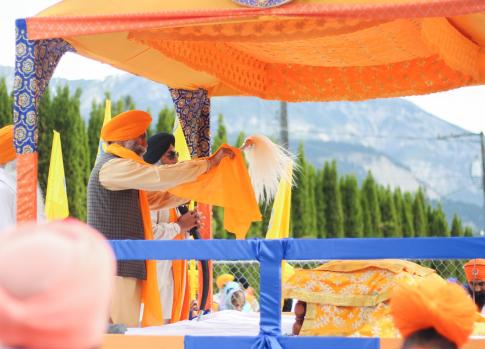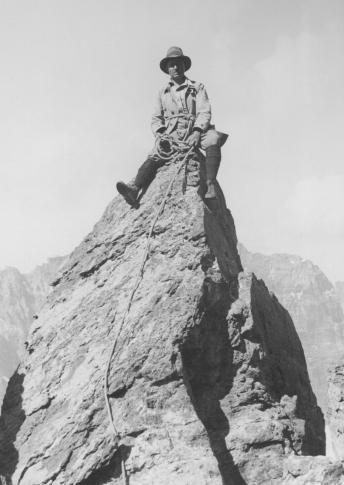
History
The History of Golden
The Ktunuxa and Secwépemc Peoples have always been here, this land was part of their traditional territory. They hunted and traveled this area and have deep connections to this landscape, its waterways, and wildlife.
In the 19th century, it was the spirit of adventure that brought the first explorers over the Rocky Mountains and the treasures of Golden that made them stay. The area still exudes the same feeling of discovery and exploration the first pioneers felt.
Exploration
In 1807, David Thompson - renowned fur trader, surveyor, and map-maker, guided by his Metis wife, Charlotte Small, and a Métis man, Joseph Howes, was tasked by the North West Company to open up a trading route to the lucrative trading territories of the Pacific Northwest. They first crossed over the Rocky Mountains and traveled along the Blaeberry River to the future site of Golden in search of the Columbia River and, ultimately, a passage to the Pacific Ocean. Their travels took them to the junction of the legendary Columbia and Kicking Horse Rivers.
The Palliser Expedition explored and surveyed western Canada between 1857 and 1860. Led by John Palliser, the expedition discovered a high mountain pass across the Continental Divide which later became the route of the main line constructed by the Canadian Pacific Railway (CPR) between Lake Louise and Field. The pass and river were named Kicking Horse when Sir James Hector, a naturalist, geologist, and surgeon, was kicked by his horse and was initially believed dead by expedition members.
Settlement
In the 1800s, the Mètis began settling in the Columbia Valley, farming, and establishing communities. They contributed much to the early days of commerce, agriculture, and other community projects throughout the Columbia Valley. Residents of Golden can trace their ancestry back to these early Métis families, and the local Métis community is represented by the Métis Nation Columbia River Society.
In 1881 the CRP hired surveyor A.B. Rogers to find a rail route through the Selkirk and Rocky Mountains. It is said that he was guided by a local Métis man, Baptiste Morigeau, and that Baptiste went ahead and set all of the resource caches for Rogers as they searched for a route through the Selkirks. In 1882, they found the pass now named for him, Rogers Pass, which lies west of Golden in Glacier National Park.
Rogers established a base camp for his survey crew led by a man named McMillan. Initially known as McMillan's Camp, the settlement was the beginning of the town of Golden. By 1884, in response to a nearby lumber camp naming itself Silver City, the residents of McMillan's Camp decided not to be outdone and renamed the settlement Golden City. Soon the term "City" became a little too pretentious for most and the town became known simply as Golden.
An alternative history says that Baptiste Morigeau, who was involved in commerce, agriculture, and school building throughout the Columbia Valley, had the first store in the settlement called the "Cache", which was open between 1881 & 1883. He changed the name of this store to Golden, thus naming the town.
The Railroad
Golden would simply not exist without the Canadian Pacific Railway (CPR). In fact, the railway’s presence helped establish Golden’s place in Canada. As the CPR constructed its cross-country network of rails, it used Golden as a base camp as it extended further into the western part of B.C. The railway was completed in 1885 and Golden soon became a prominent stop on the line. The CPR also paved the way for the Trans-Canada Highway, which helped to transform the area from a forest outpost to a true community.
The building of the CPR line, which required huge quantities of timber for railway ties, trestles, snowsheds, and buildings, was the catalyst for the growth of the forest industry in Golden. For over a century, the CPR and the forestry industry have provided employment and well-being to the town.
On May 8, 1886, Captain Frank P Armstrong, launched the steamboat "The Duchess” at Golden. Departing from the Columbia Lake she was charged with transporting supplies for Golden and the never-ending appetites of the busy CPR crew. However exciting, it was a short-lived era, for the construction of the southbound CPR tracks in 1914 executed the quick demise of the romantic era of steamboat transportation.

Golden's Sikh Community
The Sikh community history runs deep in Golden and early settlers employed by the Columbia River Logging Company date back to the 1890s. They were housed in company-built residences and carried out their religious ceremonies in a Gurdwara (temple) built on mill property. Located on what is now 13th Street South, the Gurdwara is reputed to be the first Sikh temple in North America. Although the original Gurdwara and the company houses are long gone, the Sikh community made, and continues to make, significant contributions to the settlement and development of the town of Golden.

The Swiss Guides
The CPR recognized that many travelers through Golden would want to stay, explore, and discover the incredible area for themselves. To this end, the CPR hired professional Swiss guides to assist in providing connections to this compelling yet rugged landscape.
In 1899, Eduard Feuz Sr. and Christian Haesler came to Canada from Switzerland to serve as mountain guides. In the early 20th century they were joined by brothers Ed, Ernst, and Walter Feuz, Christian Haesler Jr., Rudolph Aemmer, and Christian Bohren. Between 1899 and 1954 there were a total of 35 Swiss guides who not only provided the expertise for thousands of climbs and the safe ascents of many peaks in the Selkirk and Rocky Mountains surrounding Golden - with the admirable record of having not a single fatality - but also became tourist attractions in their own right. The wives of the Swiss Guides kept home hearths warm, and helped to build the community that still stands today.
Recognizing that working in Canada whilst their families remained in Switzerland was not ideal, the CPR management constructed permanent homes for the Swiss guides and their families, and in 1912 the Edelweiss Village was complete with six chalets which became the homes of the second-generation of guides and their families. The homes still exist today and thanks to the family of Walter Feuz are preserved along with memorabilia and stories from that time.
Mountaineering activity in the region attracted international visitors, including Alpine Club of Canada members, who based their mountain explorations on Golden.
More Resources
Read Swiss Guides Shaping Mountain Culture by Ilona Spaar. courtesy of the Consulate General of Switzerland Vancouver
Images courtesy of the Golden Museum and Archives. Visit the Golden Museum’s permanent and new exhibits. Call 250.344.5169 or visit www.goldenbcmuseum.com.
Historical Timeline
1807 - David Thompson and Charlotte Small cross the Rocky Mountains and spend the summer surveying the Columbia River.
1858 - The Palliser Expedition is sent out by the Imperial Government and led by John Palliser to find a possible route through the mountains for a roadway.
1858 - Sir James Hector is kicked in the chest by his horse, leading to the naming of the Kicking Horse River.
1871 - Walter Moberly is sent out by the government to inspect Howse Pass and the Blaeberry for suitability for the railroad.
1882 - While working for the Canadian Pacific Railway and using information gathered by Walter Moberly, and guided by Baptiste Morigeau, A.B. Rogers finds the pass for the railroad: Rogers Pass.
1882 - Golden's first name is "McMillan's Camp".
1882 - Baptiste Morigeau becomes the first merchant in Golden with his store the Cache.
1884 - Mike Carlin changes the name of his lumber camp from Carlin's Camp to "Silver City." Local citizens change the name of "McMillan's Camp" to "Golden City." Alternatively, Baptiste changes the "Cache" to "Golden", thus naming the town.
1885 - The last spike is driven in the Transcontinental Railway that links Canada from ocean to ocean.
1886 - The first riverboat "Duchess" operates on the Columbia River.
1893 - The first hospital is built in Golden.
1899 - Canadian Pacific Railway brings the first Swiss Mountain Guides to Golden.
1899 - CPR moves its divisional headquarters from Donald to Revelstoke, resulting in the demise of the once-thriving metropolis of Donald.
1920 - Captain Armstrong pilots the last riverboat, "Nowitka," on the Columbia River.
1927 - Columbia River Lumber Company goes out of business as the result of a forest fire in 1926 that burns up their timber limits.
1927 - The Kicking Horse Trail is completed between Golden and Calgary.
1929 - Construction begins on the Big Bend Highway, which is finally completed in 1940.
1948 - Golden Civic Centre opens on New Year's Eve.
1957 - The Town of Golden is incorporated.
1962 - Trans Canada Highway is opened.
2000 - Kicking Horse Mountain Resort is opened.
2012 - Golden Civic Centre is renovated and re-opens on New Year's Eve.